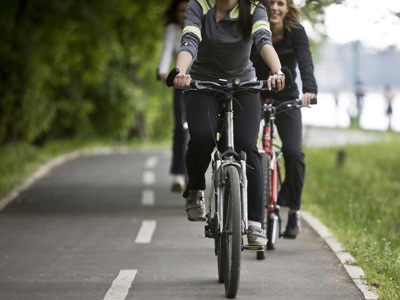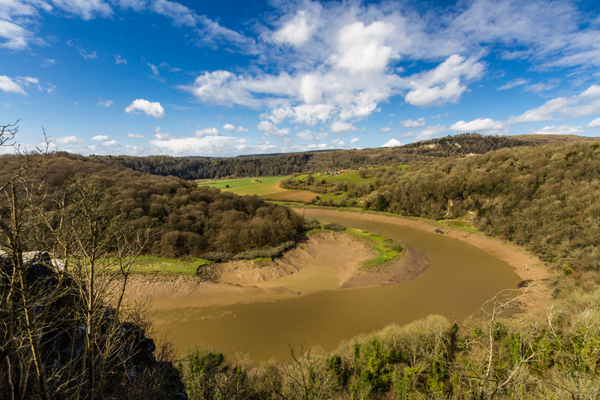
Pothole claims: How to successfully gather evidence
Potholes and road defects can put a cyclist's safety at risk. They can cause injuries and bike damage. But did you know that you could seek compensation for losses arising from accidents caused by potholes?
Posted on 15 January 2024
At Leigh Day, we are advocates for road safety and want cyclists to understand their legal rights and options. If you suffered an injury or bike damage because of a pothole, we want those responsible held to account.
Our cycling personal injury solicitors explain how to deal with bike accidents caused by potholes, and how to collect evidence for a pothole damage claim. So, what should you do after a cycling accident caused by hitting a pothole or other defect?
Gathering photo evidence of the pothole
Unfortunately for those suffering injury or damage because of a pothole, securing compensation is far from straightforward. Local authorities may defend a claim if they successfully argue that it was not an obvious hazard, or if they were unaware of it despite having in place a reasonable system of inspection and repair. For a chance of a successful claim, photo evidence of the pothole's condition at the time of the accident is crucial.
Photo evidence of the pothole will help to demonstrate whether the pothole was an obvious danger to cyclists. Where possible, we recommend taking photos at the scene just in case the council repairs the pothole before you can return to take them.
After you have gathered yourself and only if you are able, take photos of the pothole that caused your accident. If you are riding with a group, ask someone else to take them if you are not able to. If you are seriously injured or if taking a photo is not safe, ensure that you do it as soon as possible.
The photo evidence needs to show size and most importantly depth. Whilst you are unlikely to be carrying a tape measure on a bike ride, try to include a prop for scale. Depending on the size of the defect and what you are carrying, good props to use include a bottle, mini pump or tyre levers.
Place the prop upright inside the pothole and take a side-on photo with the camera level to the ground. You should have a photo that shows where the edge of the pothole hits the prop and can now measure the depth at home. A photo of a tape measure against the prop used is also useful.
As well as close-ups, take photos of the defect in the wider context of its surroundings. This can help to locate the defect and to understand the risk it presents to cyclists. Use nearby property numbers or serial numbers of the nearest streetlight/telegraph poles to record the exact location. What3words.com is a useful online tool for identifying the precise location of a defect. It can be especially helpful on roads where there are no obvious landmarks or properties to identify the location.
If possible, return to the accident's location to take more accurate measurements with a spirit level and tape measure. Place the spirit level across the width of the defect and the tape measure vertically into the middle of the pothole. The tape measure should be against the edge of the spirit level. Take clear photos of this along with the measurements of the width and length.
Evidence gathering for cycling claims is easier on quiet roads. If your accident happened on a busy road, go back when the road is quiet, like early weekend mornings. If you are seriously hurt or not local to where the accident happened, ask someone familiar with the area for help.
Report the pothole
Whilst you are not required to, after you have taken the photos, you can report the pothole or defects to your local council. Local authorities are responsible for fixing these and maintaining the roads to ensure road surfaces are safe for everyone. Reporting defects can help to prevent further accidents. Once a local authority has been made aware of a pothole it can be harder for them to deny responsibility should further incidents occur involving the same pothole.
We hope these tips are helpful if you ever need to gather evidence for a cycling injury claim, giving you the best chance for a successful claim for pothole damage.
If you wish to seek legal advice or claim compensation, Leigh Day’s personal injury lawyers specialising in cycling accidents are ready to assist you. We will provide you with the necessary support and guidance throughout the process. We are happy to discuss whether there are prospects of a claim and depending on your British Cycling membership cover, you may be entitled to free legal cover. If not, we can offer No Win No Fee where appropriate.
Our contact details - get in touch today:
Call us: 020 7650 1200
Email us: postbox@leighday.co.uk
Our Partnership with British Cycling
We believe passionately that the safety of cyclists is paramount. Our commitment to the cycling community is genuine and long-standing. We are the exclusive legal partner for British Cycling with a relationship dating back over 18 years.
To ensure the safety of our towns and cities, cyclists must be central to the plans to improve road infrastructure. This will help prevent many common cycling injuries. We are proud to be part of British Cycling's campaigning to promote cycling and reduce road accidents.

Family of cyclist killed after hitting pothole welcome council's response to Coroner
The family of a 52-year-old woman who was killed after she hit a pothole in Warwickshire, have welcomed the response by the council to do more to identify and fill potholes.


